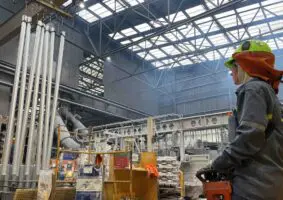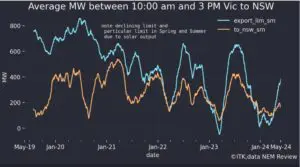As the design of the National Energy Guarantee (NEG) passes another milestone, and the seventh Emissions Reduction Fund (ERF) auction draws closer, in this update we take a closer look at current and forecast price for carbon offsets in the Australian market.
Following the conclusion of the Carbon Price Mechanism, the ERF has formed the primary market for Australian Carbon Credit Units (ACCUs), with the Clean Energy Regulator entering into contracts to purchase offsets from developers active in the land-use and industrial sectors.
More recently, activity in the secondary spot market has developed, underpinned by large emitters offsetting emissions over their facility baselines established by the safeguard mechanism.
Combined with the upcoming federal election, and the expectation that all sectors will ultimately be required to contribute to Australia’s national target, this has led to increased interest in short and long-term ACCU prices.
So what is the Australian carbon price?
The current price for ACCUs in the ERF
The ERF operates as a competitive reverse auction mechanism, with confidential bids submitted to the Regulator, and accepted subject to clearing rules, which can vary by auction.
The Clean Energy Regulator (Regulator) sets a benchmark price for each auction, or price ceiling, which is not disclosed to the market. Eligible bids are placed in a bid stack and ranked by price offered, with bids above the benchmark price excluded from consideration.
All bids up to 25 per cent of the volume offered under the benchmark price are accepted, with the Regulator selecting bids above this point based on perceived value.
Rather than disclose a transparent market price, however, the ERF operates as an opaque tender, with underlying contract prices corresponding to bid prices submitted by proponents.
Following each auction, the Regulator discloses the volume weighted average price of ACCUs contracted, with individual contract prices not released.
While the true price for ACCUs is made up of a wide spread in contract prices, the volume weighted price is influenced by the size of projects contracted at different price points. In this way the volume weighted average price does not reflect a ‘market price’ for ACCUs.
The average price of ACCUs at the first ERF auction in April 2015 was $13.95, falling to $10.23 in early 2016 before rising back above $13 in late 2017 on the back of reduced participation, lower competition and wider contracting by the Regulator.
Figure 1: Weighted average price of abatement by auction (CER)
The RepuTex ACCU reference price
While the publishing of the average price of abatement inevitably impacts market sentiment, in practice, it is of little help to businesses as a price signal for abatement as it does not reflect the current price of ACCUs contracted by the Regulator.
For this reason, the RepuTex ACCU reference price seeks to track the highest clearing price paid by the Regulator, or the lowest ask price a seller is willing to accept, to provide a more accurate reference point for the current market price of ACCUs.
Determining the highest clearing price of an auction is intentionally made difficult by the Regulator as it seeks ‘competitive bids’ for emissions reductions ‘at least cost’.
Subsequently, the analysis of underlying auction price dynamics requires more sophisticated models to estimate contract prices, based on bidder behaviour and supply costs and volumes.
Our ERF Price Simulation Model replicates the operation of the ERF reverse auction bidding system by modelling a series of auction outcomes, arriving at an upper and lower pricing bound for each auction event.
The model utilises our latest ACCU supply forecasts and analysis of project costs, registrations and bidder behaviour to simulate how each auction bid stack may form (as a projection or retrospectively).
The model therefore provides a deeper understanding of simulated auction price dynamics, enabling proponents to quantify the trade-offs for speculative or conservative bidding strategies, based on our ‘upper’ and ‘lower’ contract price expectations.
For example, analysis of the auctions 1-3 indicated a wide spread in contract prices, with a lowest price of around $9 while highest clearing prices reached over $16, reflecting a significant premium over both the lowest contract price and the average price over the first three auctions ($11.83).
Figure 2: Illustrative ERF auction bid stack – highest clearing price vs. weighted average price
Secondary carbon spot prices
Given the notable spread between lowest and highest estimated contract prices at each auction, and the inadequacy of the average price as a robust reference point, the RepuTex ACCU reference price provides a more accurate reference point for the current market price of abatement.
In this way, the price path also provides a more robust signal for the ‘spot’ price for ACCUs purchased outside of the ERF.
Over the past six months, scarcity of supply has led to upward pressure on the carbon spot price, with the bulk of ACCUs created by proponents ‘locked away’ from the broader market due to the nature of long-term delivery contracts entered by the Regulator.
In addition, contract terms allow payment for early delivery of ACCUs, incentivising proponents to deliver units early and receive contracted (bankable) payments early, rather than make supply available to the market.
This has led to short supply in the market, putting upward pressure on ACCU prices, with secondary traders active at a notable premium to ERF contract prices, trading up to $18.
In this context, proponents active in the secondary market have been able to generate notable returns, yet at small volumes, underpinned by emerging compliance activity under the safeguard mechanism, and initial interest from companies seeking to enter longer term offtake agreements to guard against any future compliance liabilities.
Long-term price expectations – the road to 2030
Longer term, the Australian carbon price is expected to move in line with the amount of abatement required to fulfil compliance obligations under the Paris Agreement, implemented via sectoral policy mechanisms such as the NEG and safeguard mechanism.
This is subject to new policy, with the Australian Labor Party (ALP) proposing to increase the national target to 45 per cent below 2005 levels by 2030, underpinned by a domestic Emissions Trading Scheme (ETS) for high emitting companies, broadly in line with its 2015 election platform.
As a result, abatement costs are expected to rise over time, in line with our marginal abatement cost (MAC) modelling for the Australian market, with offsets likely to be the marginal source of abatement for many high cost sectors seeking to hedge exposure to forward price risks.
We continue to see ample domestic abatement to meet a 2°C target under the Paris Agreement, with around 600 million tonnes (Mt) of emissions reductions available across the economy by 2030.
Figure 3: RepuTex marginal abatement cost curve (MAC) for Australia in 2030
This is equivalent to Australia’s emissions in 2005, the baseline year for Australia’s contribution to the Paris Agreement, suggesting Australia could meet any relative cut in emissions by 2030.
In the absence of a broad carbon price signal, however, all sectors of the economy are unlikely to share their abatement costs equally, with winners and losers depending on the final design of new policy levers, and/or emissions reduction targets for specific sectors.
Source: RepuTex Energy. Reproduced with permission.











